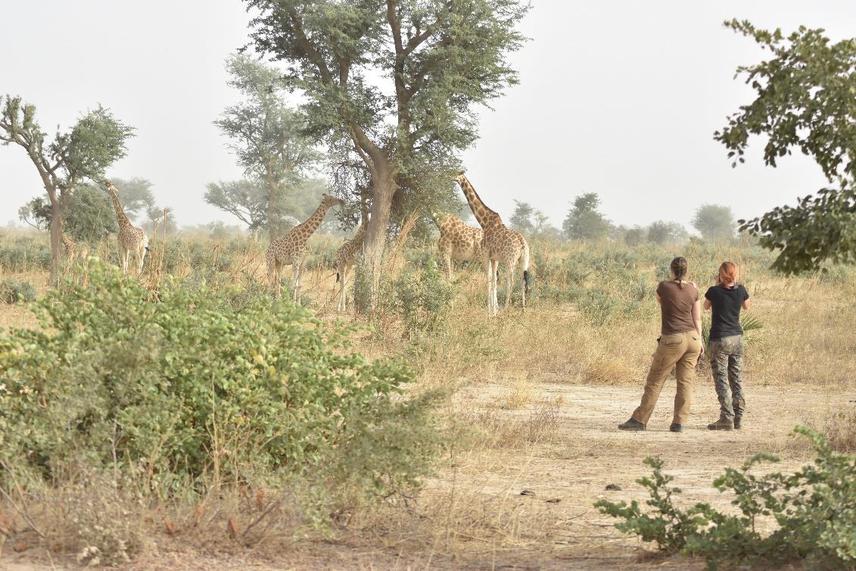Kateřina Gašparová
The last remaining population of West African giraffe is restricted to Republic of Niger. Their numbers are currently increasing due to conservation activities. In December 2018 eight giraffe were successfully re-introduced to their historical range.
The main aim of this study is to analyse data from GPS satellite-tagged giraffe and from direct observation to get information about the habitat use. Additionally, we aim to get knowledge about their social behaviour and interactions with livestock, as the giraffe live in direct contact with people and livestock. The last aim is to understand local people´s attitude and level of knowledge about giraffe via questionnaire survey in surrounding villages. The understanding of giraffe movement, behaviour, human/livestock interaction and local knowledge is an essential part of conservation of the last West African giraffe population.

Field observations and data collection of West African giraffe in Niger
Giraffe numbers across Africa have declined by ~40% in the last three decades. The main threats are increasing human populations resulting in habitat loss and fragmentation, poaching and climate change leading to drought and habitat degradation. Much of these impacts caused the disappearance of West African giraffe (Giraffa camelopardalis peralta) across much of their range. The last remaining population of West African giraffe, recently re-classified as “Vulnerable” on the IUCN Red List, is found only in the Republic of Niger.
In framework of my Ph.D. studies I was given the opportunity to join the team of international experts and to contribute to the conservation of this unique population of West African giraffe.
My project is focused on the giraffe habitat use, social and spatial behaviour and interaction with livestock and human population. Project is located in the original area of giraffe distribution in so called “Giraffe Zone” situated nearby Kouré, ~80 km southeast from the capital Niamey. The results will be compared with recently re-introduced population to Gadabedji Biosphere Reserve after a fifty years-long absence. Re-introduction was done by the Giraffe Conservation Foundation (GCF) in partnership with the Sahara Conservation Fund (SCF) and the Government of Niger as part of a conservation action. Also, I will focus on increasing awareness as the positive approach of local communities directly affects the sustainability of giraffe population. This is crucial for their conservation in Niger as giraffe cohabitate the same areas as people and livestock and rely on the same resources. It is critical to better understand past, present and future impacts of living with giraffe in their current and new range to help with ongoing conservation recommendations. This work will directly contribute to long-term giraffe conservation.